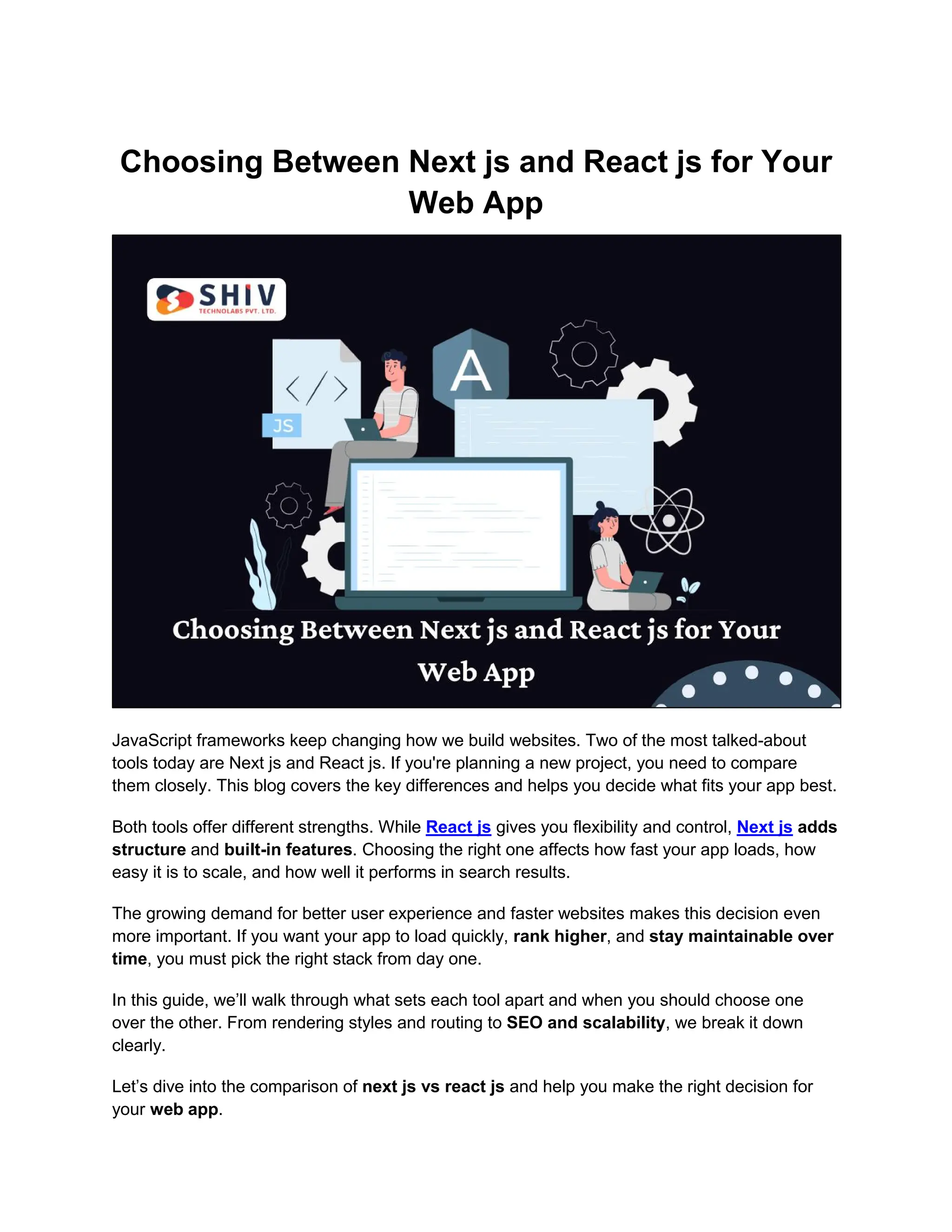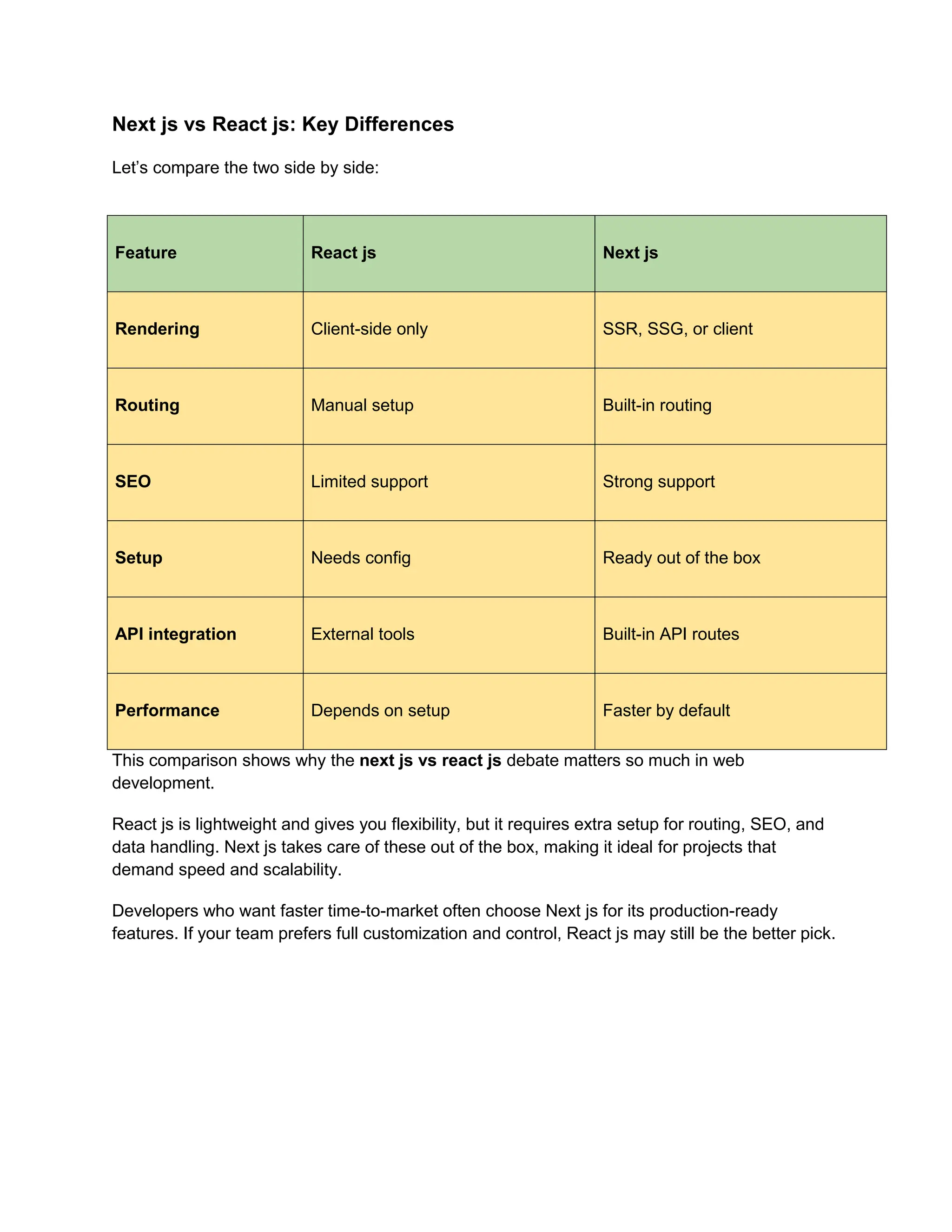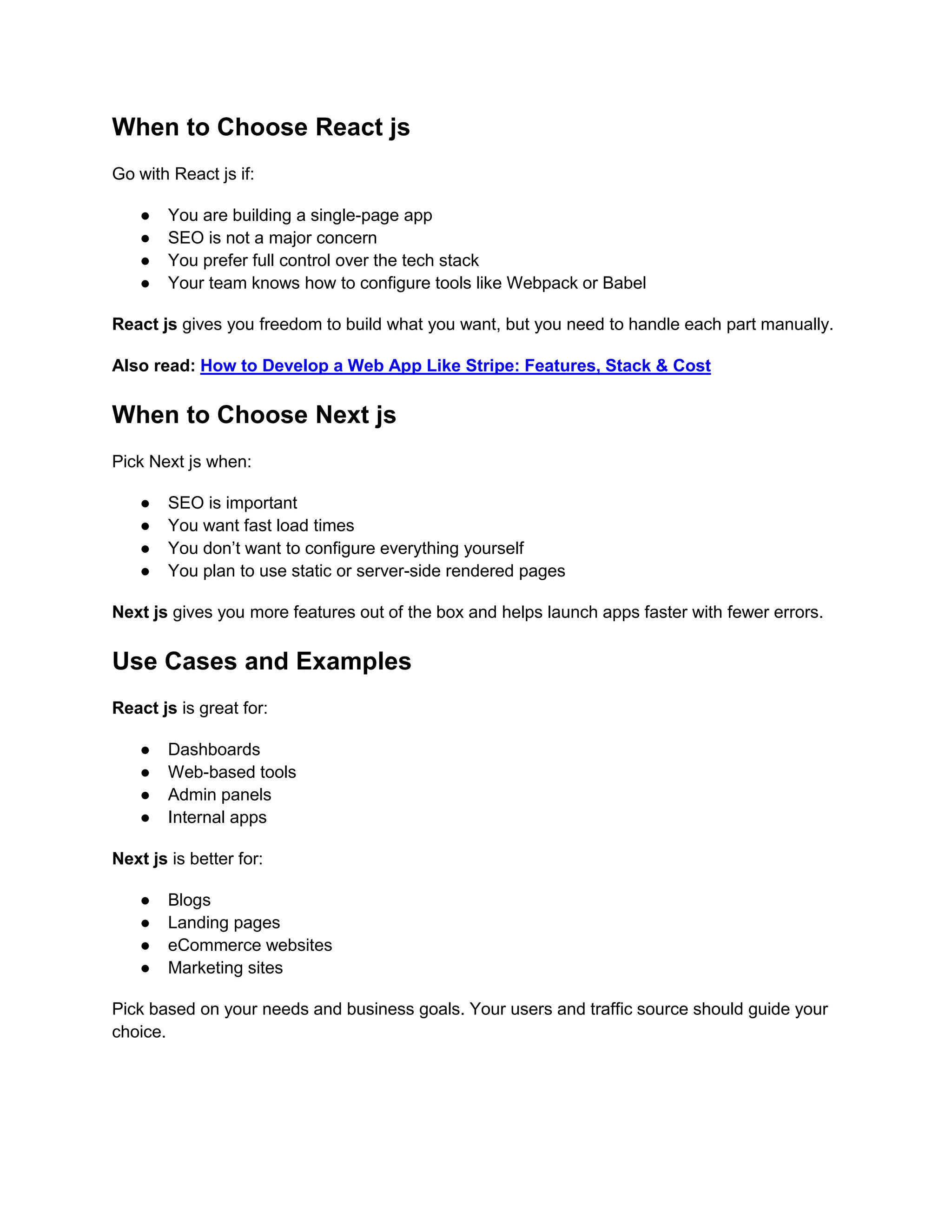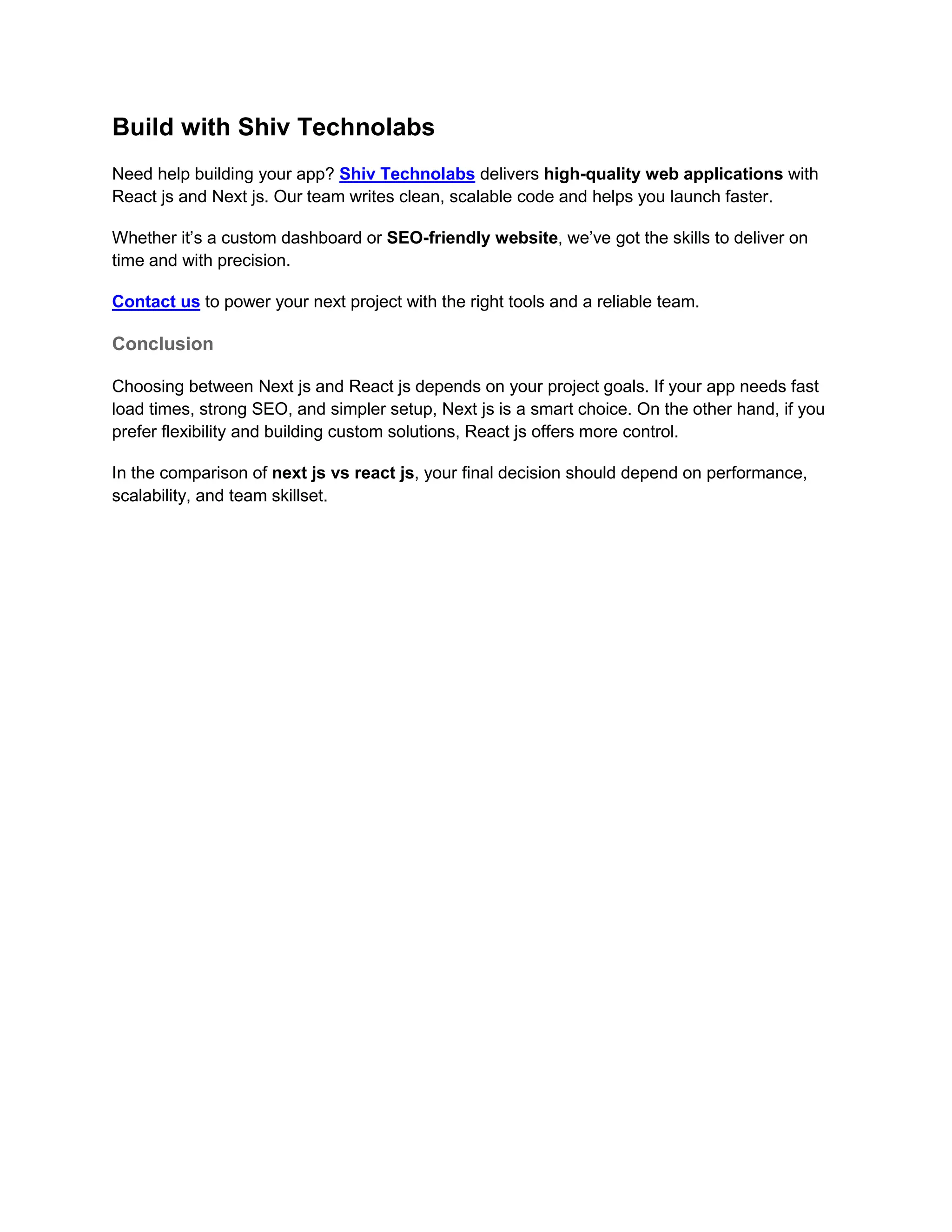Read our latest blog on Next js vs. React JS to help choose the right tool for your web app. We have explained how both tools work, their key features, and the main differences between them. We also have discussed comparing performance, SEO, routing, and setup time. If you're unsure which tool fits your project better, this blog helps make that decision easier. Whether you want faster load times or more control, this blog breaks everything down in simple terms. For more information, read our blog!





